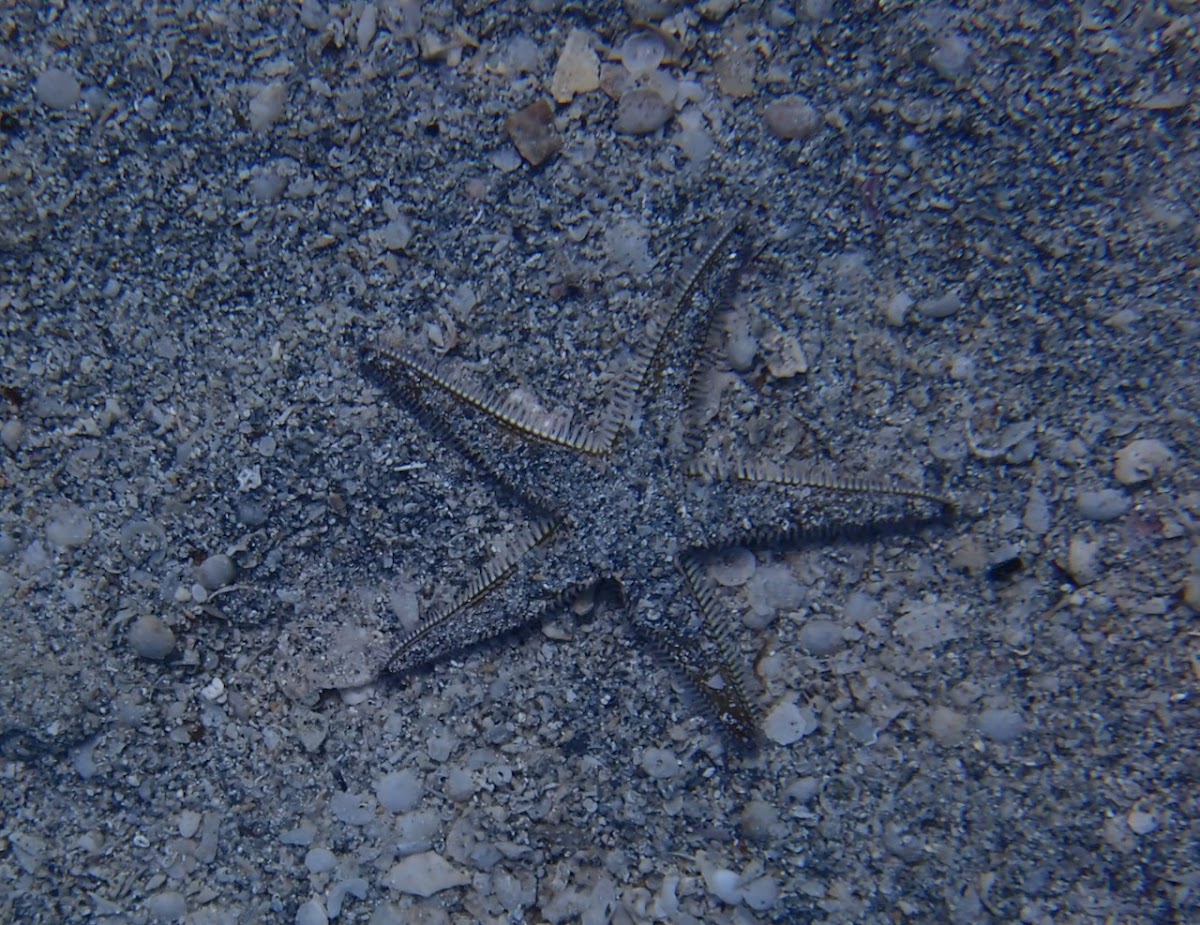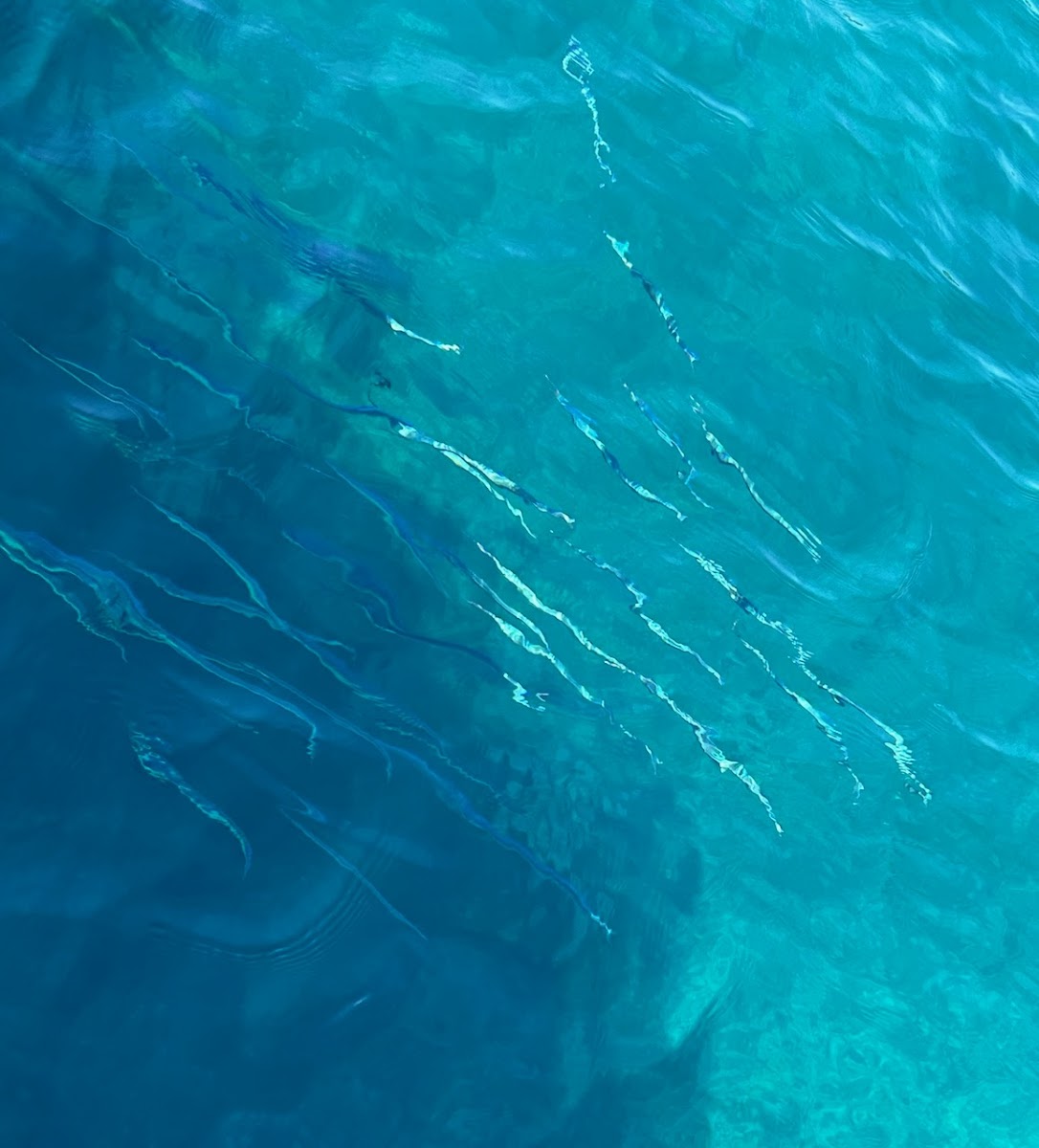Last week in September I spent on Heron again, along with some friends. We drove to Mali Lošinj on Sunday and Captain was already waiting for us. But the weather was very windy, strong burja (NE wind) was blowing, so we decided to stay in marina that night. In late afternoon we drove to the town of Mali Lošinj and made a stop along the way to check the wind and the sea on the North side. In moments our car was salty from the spray that the wind was carrying from the sea.
Later we had a really delicious meal in a small restaurant at the Lošinj airport.Next morning the wind was still strong, although it should already weaken down according to most forecasts. After coffee and a breakfast we maneuvered Heron from between the boats in marina and sailed SE along Lošinj. Ride was very fast and a bit bumpy and we made the first stop behind Ilovik. Although sun was shining nobody went swimming because of the strong wind. In the afternoon we sailed on towards Olib, but soon changed our mind. The wind kept on blowing, there were very uncomfortable waves rolling down from Kvarnerič, so we sailed to Uvala Bujsin on West side of Silba and anchored for the night. We were alone in the pretty bay and some of us even got into the water.
I'm also posting this photo of the same guy because his rhinophores (nosni izrastki ali rinofore) in front are so nicely visible. The greyish lace in the back are the gills (škrge) with which they are breathing.
This is another goby, the Slender goby or Peščeni glavač (gobius geniporus).
I've seen two Red comb stars or Oranžaste morske zvezde (Astropecten aranciacus).
This might be a Daisy anemone or Sončna vetrnica (Cereus pendunculatus), I'm not really sure.
The Red-mouthed goby or Rdečeusti glavač (Gobius cruentatus) was posing with all of its fins spread.
The Murex shell or Čokati volek (Hexaplex trunculus) has very colourful rim around the opening of shell.
I'm not sure who this pretty thing is, but I love the colours.
This was what we woke to the next morning and as my friend said, if there were some palm trees along the shore, this could well be photographed in the Caribbean.
In early afternoon we sailed North towards Rab. At the beginning there was almost no wind and then somewhere near Novalja on Pag all of the sudden we got hit by 30 knots of Burja, NE wind. We were really thinking wind was gone. It only lasted for some hour, but it made the boat salty and produced waves. Again all the forecasts, that produce generalised prognosis, were wrong and we found that only Croatian Aladin included all the local weather patterns and relief of the land to accurately predict the wind, also for the next days.
We had a calm night in protected anchorage, although wind was still strong. Next morning most of forecasts claimed that wind was already over, but in reality it was nothing but. Captain and crew still decided to sail dinghy to town of Silba and found there a big party in honour of new police station going on.
In the middle of the day we sailed on to Olib, we sailed along Silba to the South and then back up North to our usual anchorage in NW part of the island. And we were alone again in the whole anchorage.
The early afternoon light was still quite good and I went snorkelling. It took me a couple of seconds to get my head and especially ears under the water, but after a while water wasn't cold any more. And I've seen quite a few pretty things.
The pair of gobies on this photo could be Black gobies or črna glavača (gobius niger), but they are not of the usual colours. Usually they are darker with blue fins, but the body shape is right and I've found photos of some in similar colours as here.
This was the first big excitement of the day, the Redbrown leathery doris or Ploščati perjaničar (Platydoris argo). It was very small, probably a baby. I've seen plenty of adults here in Olib over the years.I'm also posting this photo of the same guy because his rhinophores (nosni izrastki ali rinofore) in front are so nicely visible. The greyish lace in the back are the gills (škrge) with which they are breathing.
This is another goby, the Slender goby or Peščeni glavač (gobius geniporus).
I've seen two Red comb stars or Oranžaste morske zvezde (Astropecten aranciacus).
This might be a Daisy anemone or Sončna vetrnica (Cereus pendunculatus), I'm not really sure.
The Red-mouthed goby or Rdečeusti glavač (Gobius cruentatus) was posing with all of its fins spread.
The Murex shell or Čokati volek (Hexaplex trunculus) has very colourful rim around the opening of shell.
I'm not sure who this pretty thing is, but I love the colours.
In the evening we had a beautiful sun set over Silba...
...while an almost full moon was raising above Olib.This was what we woke to the next morning and as my friend said, if there were some palm trees along the shore, this could well be photographed in the Caribbean.
In the middle of the day I was snorkelling again. I saw two Common stingrays or Navadna morska biča (Dasyatis pastinaca).
This is the Yellow tube sponge or Spužva žveplenjača (Aplysia aerophoba), aerophoba means "afraid of the air", probably because it changes its colour to blue when exposed to the air.In early afternoon we sailed North towards Rab. At the beginning there was almost no wind and then somewhere near Novalja on Pag all of the sudden we got hit by 30 knots of Burja, NE wind. We were really thinking wind was gone. It only lasted for some hour, but it made the boat salty and produced waves. Again all the forecasts, that produce generalised prognosis, were wrong and we found that only Croatian Aladin included all the local weather patterns and relief of the land to accurately predict the wind, also for the next days.
In early evening we anchored in lovely bay Uvala sveti Kriftofor. And again we were all alone.
Next day around noon I went snorkelling again. There was lots of life and colours under water. I found a Red squirt or Rdeči kozolnjak (Halocynthia papillosa) under a rock.
There were several bright Orange ray sponges or Spužve žilavke (Spirastrella cunctatrix) there.
This is a Marbled rock crab or Marogasta rakovica (Pachygrapsus marmoratus).
The small things under the sponge are Hydroids, I don't know exactly of which kind.
And this is a Twin fan worm or Dvoperjaničar (Bispira volutacornis).
I have a soft spot for Sea lemons or Morske pomaranče (Tethya citrina) and I'm always very happy when I find one. Although it's only a sponge. I find the Slovene name more appropriate than English or Latin, because it really looks more like an orange than a lemon.
These delicate creatures are Ostrich-plume hydroids or Morska peresca (Aglaophenija spp.), the relatives of corals.
This is one of the prettiest algae, the Forkweed or Ploščata razcepljenka (Dictyota dichotoma).
This Rock goby or Skalni glavač (Gobius cobitis) was probably the biggest that I've ever seen, it almost frightened me looking so gloomy under the rock. It can grow up to 30cm, and this one looked to me to be right there with size.
I was happy to see the Red-black triplefin or Rdeči sprehajalček (Tripterygion tripteronotus), even without bright red colours, this year I haven't seen them often.
I don't think I've ever seen a Date shell or Morski datelj (Lithophaga lithopaga) surrounded by algae.
When I was already out of the water, we saw a school of Sea needles or Igle (Belone belone) swimming around the boat, along with a big school of Sea breams or Šparov. Sea needles were probably attracted by large schools of Mediterranean sand smelts or Gavunov, that were abundant in the bay and are the favourite food of Sea needles. But there are bigger fish that eat Sea needles and they also came, so we saw a lot of hunting around the boat and fish jumping out of the water. What a sight!
This is a Marbled rock crab or Marogasta rakovica (Pachygrapsus marmoratus).
The small things under the sponge are Hydroids, I don't know exactly of which kind.
And this is a Twin fan worm or Dvoperjaničar (Bispira volutacornis).
I have a soft spot for Sea lemons or Morske pomaranče (Tethya citrina) and I'm always very happy when I find one. Although it's only a sponge. I find the Slovene name more appropriate than English or Latin, because it really looks more like an orange than a lemon.
These delicate creatures are Ostrich-plume hydroids or Morska peresca (Aglaophenija spp.), the relatives of corals.
This is one of the prettiest algae, the Forkweed or Ploščata razcepljenka (Dictyota dichotoma).
This Rock goby or Skalni glavač (Gobius cobitis) was probably the biggest that I've ever seen, it almost frightened me looking so gloomy under the rock. It can grow up to 30cm, and this one looked to me to be right there with size.
I was happy to see the Red-black triplefin or Rdeči sprehajalček (Tripterygion tripteronotus), even without bright red colours, this year I haven't seen them often.
I don't think I've ever seen a Date shell or Morski datelj (Lithophaga lithopaga) surrounded by algae.
And finally there were also my beloved tunicates, the Sea squirt Sea strawberries or Rožnati plaščarji (Sindyum elegans or Aplidium elegans).
Beside the pretty colours and Hydroids there are also the Sea tubes or Bleščeči mehurčki (Valonia utricularis) in the upper part of the photo, the shiny bubbles are actually one cell each.When I was already out of the water, we saw a school of Sea needles or Igle (Belone belone) swimming around the boat, along with a big school of Sea breams or Šparov. Sea needles were probably attracted by large schools of Mediterranean sand smelts or Gavunov, that were abundant in the bay and are the favourite food of Sea needles. But there are bigger fish that eat Sea needles and they also came, so we saw a lot of hunting around the boat and fish jumping out of the water. What a sight!































No comments:
Post a Comment